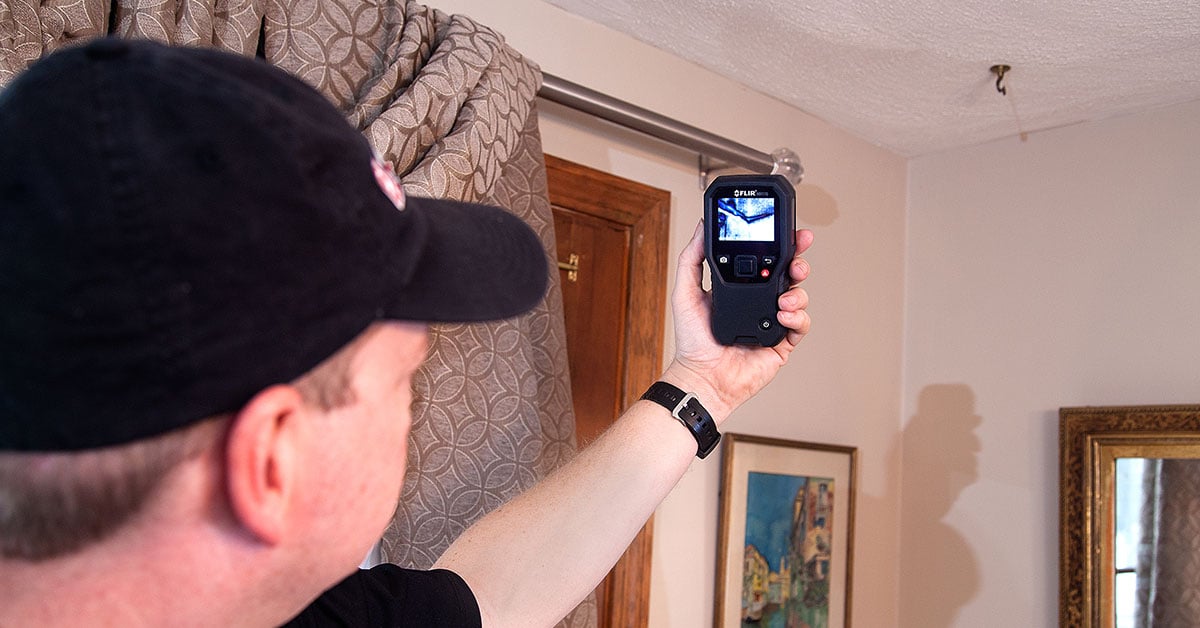Exactly how to Check If Your House Has a Covert Leakage
Exactly how to Check If Your House Has a Covert Leakage
Blog Article
The content following next on the subject of Hacks to detect leaks is immensely fascinating. Check it out for your own benefit and decide what you think about it.

Early detection of dripping water lines can minimize a prospective catastrophe. Some tiny water leakages might not be noticeable.
1. Analyze the Water Meter
Every house has a water meter. Examining it is a guaranteed manner in which helps you find leaks. For starters, shut off all the water resources. Guarantee no person will certainly flush, use the faucet, shower, run the washing device or dishwashing machine. From there, most likely to the meter as well as watch if it will transform. Considering that nobody is using it, there must be no activities. If it relocates, that indicates a fast-moving leak. If you find no adjustments, wait an hour or 2 as well as inspect back again. This suggests you might have a slow leakage that can also be underground.
2. Inspect Water Intake
If you detect abrupt changes, despite your usage being the exact same, it indicates that you have leakages in your plumbing system. An abrupt spike in your expense indicates a fast-moving leak.
Meanwhile, a steady rise every month, despite the same behaviors, shows you have a slow leakage that's also slowly intensifying. Call a plumber to completely examine your property, especially if you really feel a cozy location on your floor with piping beneath.
3. Do a Food Coloring Examination
When it comes to water consumption, 30% comes from bathrooms. If the color in some way infiltrates your dish during that time without flushing, there's a leak between the container as well as bowl.
4. Asses Outside Lines
Do not fail to remember to examine your outside water lines too. Needs to water permeate out of the connection, you have a loose rubber gasket. One small leakage can squander heaps of water and also spike your water costs.
5. Evaluate the scenario as well as inspect
Property owners should make it a practice to inspect under the sink counters and also also inside closets for any kind of bad odor or mold development. These two warnings suggest a leak so timely attention is needed. Doing regular inspections, even bi-annually, can conserve you from a significant issue.
If you know your residence is already old, keep a careful eye on your heaters, pipes, pipes and so on. Check for stainings and compromising as many appliances and pipes have a life expectancy. They will likewise normally wear away due to tear and also put on. Don't wait for it to escalate if you think dripping water lines in your plumbing system. Call a professional plumber immediately so you do not wind up with a horrible mess in your house.
Early detection of dripping water lines can reduce a possible calamity. Some tiny water leaks might not be noticeable. Inspecting it is a proven means that assists you discover leaks. One tiny leakage can waste loads of water and also surge your water costs.
If you suspect dripping water lines in your plumbing system, do not wait for it to escalate.
WARNING SIGNS OF WATER LEAKAGE BEHIND THE WALL
PERSISTENT MUSTY ODORS
As water slowly drips from a leaky pipe inside the wall, flooring and sheetrock stay damp and develop an odor similar to wet cardboard. It generates a musty smell that can help you find hidden leaks.
MOLD IN UNUSUAL AREAS
Mold usually grows in wet areas like kitchens, baths and laundry rooms. If you spot the stuff on walls or baseboards in other rooms of the house, it’s a good indicator of undetected water leaks.
STAINS THAT GROW
When mold thrives around a leaky pipe, it sometimes takes hold on the inside surface of the affected wall. A growing stain on otherwise clean sheetrock is often your sign of a hidden plumbing problem.
PEELING OR BUBBLING WALLPAPER / PAINT
This clue is easy to miss in rooms that don’t get much use. When you see wallpaper separating along seams or paint bubbling or flaking off the wall, blame sheetrock that stays wet because of an undetected leak.
BUCKLED CEILINGS AND STAINED FLOORS
If ceilings or floors in bathrooms, kitchens or laundry areas develop structural problems, don’t rule out constant damp inside the walls. Wet sheetrock can affect adjacent framing, flooring and ceilings.
https://www.servicemasterbyzaba.com/blog/how-to-detect-water-leakage-in-walls/

We had been guided to that article on Leaking water lines through an acquaintance on our other web property. Those who enjoyed our blog posting please make sure you remember to share it. I cherish reading our article about Top leak detection hacks.
Report this page